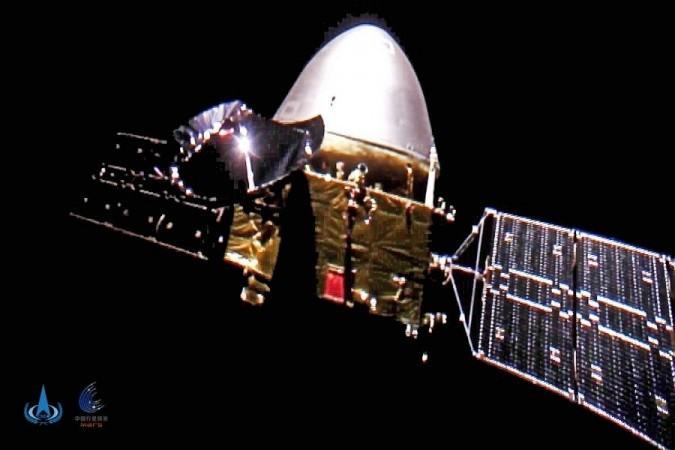The China National Space Administration (CNSA) announced on Sunday that the country's Mars probe Tianwen-1 has travelled more than 400 million km and is expected to enter the Red Planet's orbit next month.
As of 6 a.m. on Sunday, the probe had flown in space for 163 days and was about 130 million km from Earth and about 8.3 million km from Mars, reports Xinhua news agency. According to the CNSA, the probe is functioning stably and is scheduled to slow down before entering Mars orbit in more than a month and preparing itself to land on the Red Planet.

Since its launch on July 23, 2020, the Mars probe has captured an image showing both Earth and the Moon, as well as taking several selfies. It has carried out three orbital corrections, a deep-space manoeuver and self-checks on multiple payloads.
The Tianwen-1 probe, weighing about five tonnes, consists of an orbiter, a lander and a rover. It is designed to complete orbiting, landing and roving in one mission. After entering the Mars orbit, it will spend two to three months surveying potential landing sites, using a high-resolution camera to prepare for the landing in May.
Touchdown of lander
The most challenging part of the mission will be the soft landing, an autonomous process of the probe lasting seven to eight minutes, according to the CNSA. The probe will use its aerodynamic shape, parachute and retrorocket to decelerate and buffer legs to touch down.
After the landing, the rover will be released to conduct scientific exploration with an expected lifespan of at least 90 Martian days (about three months on Earth), and the orbiter, with a design life of one Martian year (about 687 days on Earth), will relay communications for the rover while conducting its own scientific detection.
Tianwen-1 means 'Questions to Heaven' and comes from a poem written by Qu Yuan (about 340-278 BC), one of the greatest poets of ancient China.

















